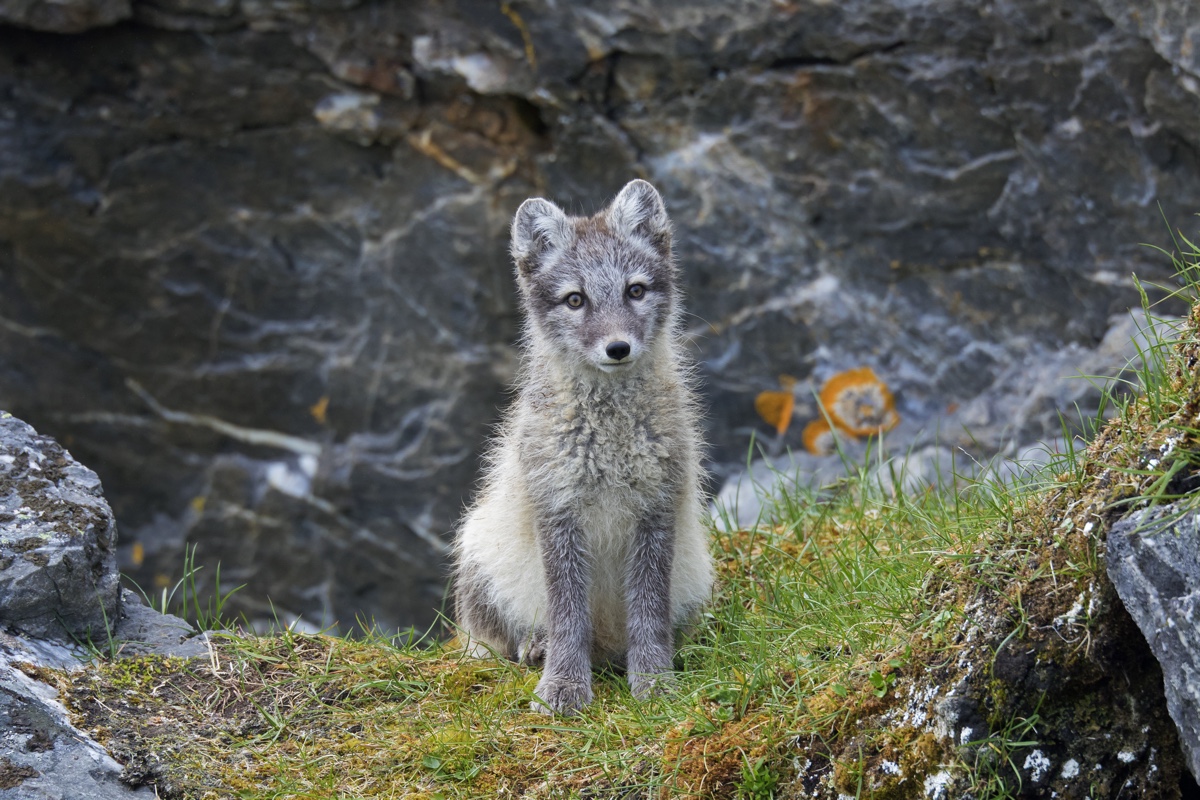Scientists 'Thunderstruck' As Arctic Fox Makes Stunning 2,100-Mile Journey in Just 76 Days

A baby Arctic fox with a dark-bluish coat recently made an epic journey on its own, trekking 2,179 miles (3,506 kilometers) in 76 days, crossing stretches of dynamic sea ice and glaciers.
The young female left the Svalbard Archipelago in Norway on March 26, 2018, reaching Greenland 21 days later while searching for food, according to news reports on the case. Then, on June 6, the fox left Greenland, reaching Ellesmere Island in Nunavut, Canada, on June 10, completing one of the longest tracked journeys for an Arctic fox (Vulpes lagopus), according to a research paper describing the feat, published online June 24 in the journal Polar Research.
And the little one wasn't wasting any time, crossing the treacherous scape at a clip of 28.8 miles per day (46.3 km per day) on average and reaching a top speed of 96.3 miles per day (155 km per day) on the ice sheet in northern Greenland, according to the researchers. "This is the fastest movement rate recorded for this species," the scientists, Eva Fuglei, of the Norwegian Polar Institute, and Arnaud Tarroux, of the Norwegian Institute for Nature Research, wrote in the paper. [The 10 Most Incredible Animal Journeys]
"We couldn't believe our eyes at first. We thought perhaps it was dead or had been carried there on a boat, but there were no boats in the area. We were quite thunderstruck," Fuglei told NRK, the Norwegian government's public broadcasting company, as translated by BBC News.
Scientists had captured this fox on July 29, 2017, near the front of a glacier called Fjortende Julibreen in Svalbard, where they equipped the animal with a radio-tag collar so they could track the fox's whereabouts. They also weighed the animal — just 4.2 lbs. (1.9 kilograms) — and noted its estimated age based on tooth wear (the fox was considered a juvenile). A BBC News report suggested that the fox was not yet a year old when collared.
Besides showing off the mad hiking skills of this little fox, the study also revealed a means for fox genes to "flow" between different environments. The canine traveler is one of two subtypes of the Arctic fox. There are the bluish-hued foxes, which tend to stick to coastal areas that are free of ice and snow in the winter and also devoid of rodents called lemmings; the other subtype tends to have white fur and hunts lemmings in certain Arctic environments.
Since this "blue" Arctic fox literally switched from a nonlemming to a lemming ecosystem, the researchers suggested, "Our observation supports evidence of gene flow across Arctic regions, including those seasonally bridged by sea ice."
Get the world’s most fascinating discoveries delivered straight to your inbox.
- Image Gallery: Fossil Forest in the Canadian Arctic
- Images: Greenland's Gorgeous Glaciers
- Images: Amazing Arctic — Creatures of the Bering Sea
Originally published on Live Science.
Jeanna Bryner is managing editor of Scientific American. Previously she was editor in chief of Live Science and, prior to that, an editor at Scholastic's Science World magazine. Bryner has an English degree from Salisbury University, a master's degree in biogeochemistry and environmental sciences from the University of Maryland and a graduate science journalism degree from New York University. She has worked as a biologist in Florida, where she monitored wetlands and did field surveys for endangered species, including the gorgeous Florida Scrub Jay. She also received an ocean sciences journalism fellowship from the Woods Hole Oceanographic Institution. She is a firm believer that science is for everyone and that just about everything can be viewed through the lens of science.


